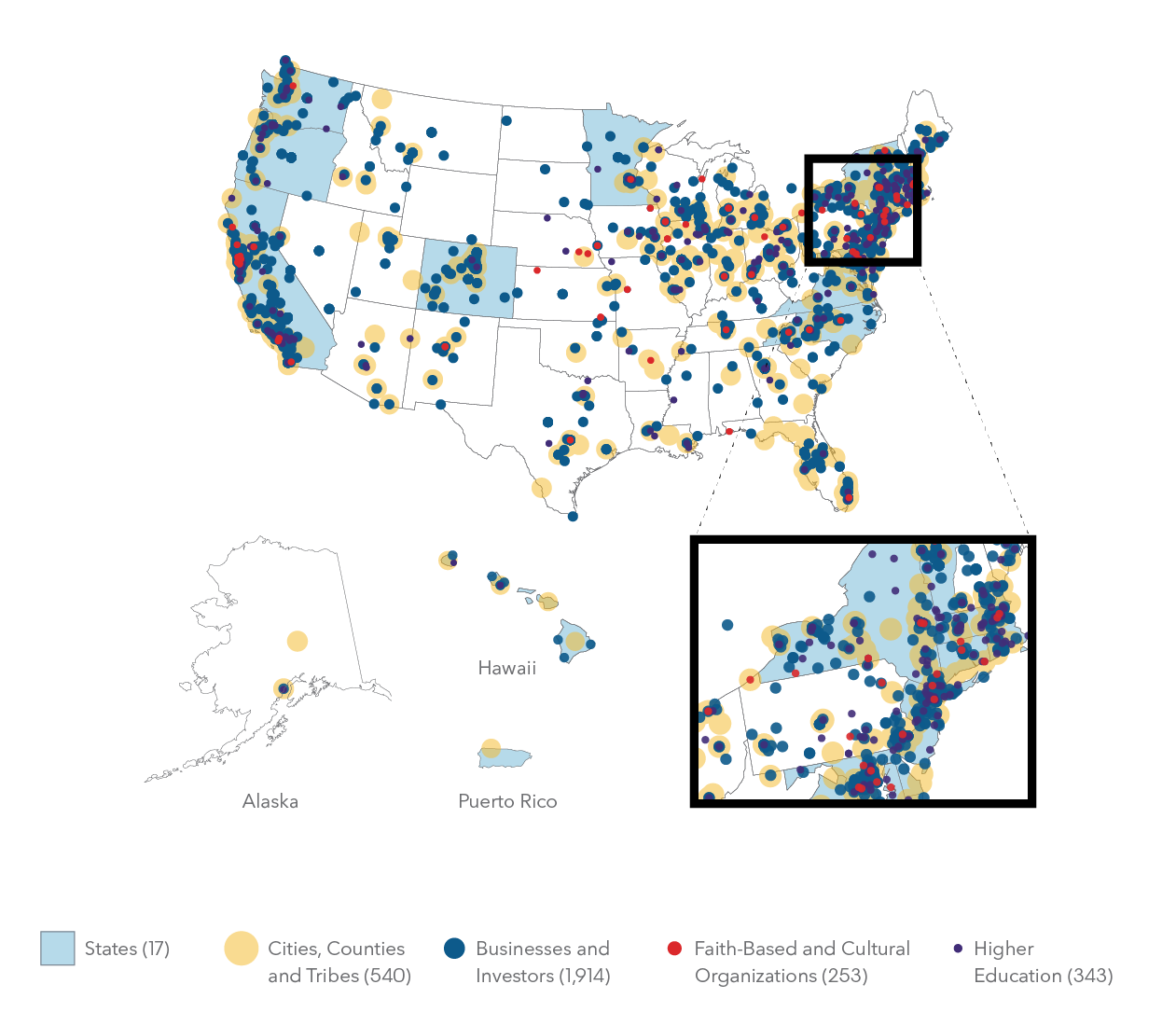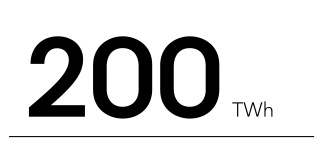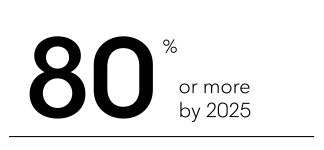Fulfilling America’s Pledge
How States, Cities and Businesses are Leading the United States to a Low-Carbon Future
Meeting the ambitious goals of the Paris Agreement demands full partnership and deep collaboration between all actors across our society: states, cities, businesses, universities, and communities.
The decisions taken by these real economy actors shape the trajectory of greenhouse gas emissions, drive innovation across the economy, and determine the speed of the global energy transition. And nowhere is this kind of decentralized climate leadership currently more important than in the United States.
The America’s Pledge initiative was established by former New York City Mayor and United Nations Special Envoy for Climate Action Michael R. Bloomberg and California Governor Edmund G. Brown, Jr. to aggregate, analyze, and showcase climate leadership by America’s states, cities and businesses.
Fulfilling America’s Pledge, launched at the 2018 Global Climate Action Summit, is the most comprehensive assessment to date of how these real economy leaders are driving the United States toward a low-carbon future.

Today, we are almost halfway to the original U.S. target under the Paris Agreement of 26-28% below 2005 levels by 2025. Current policies and existing pledges from real economy actors, along with market forces and technology change, will deliver economy-wide emissions reductions of 17% below 2005 levels by 2025, even accounting for economic and population growth.
Broader engagement of states, cities, businesses, other real-economy actors, within realistic legal and political limits, has the potential to reduce U.S. emissions more than 24% below 2005 levels by 2025.
This would be within striking distance of the Paris pledge, making the 26% threshold achievable shortly thereafter. Moreover, such action would drive an even faster rate of economy-wide decarbonization between 2025 and 2030.

In the year since the Trump Administration announced its intent to withdraw from the Paris Agreement, over 3,000 real economy actors have pledged their support for the Paris Agreement and commitment to continued action on climate change by joining the “We Are Still In” declaration and participating in other networks such as the U.S. Climate Alliance and the Climate Mayors.
The economic activity of this “coalition of the willing” is significant, equivalent to that of the third-largest country in the world. Specifically, the U.S. states, cities, businesses, and other leaders of the real economy that remain committed to the Paris Agreement represent over half of the U.S. population (173 million people), over half of the American economy ($11.4 trillion), and over 35 percent of nationwide GHG emissions.
The decisions made by real economy actors shape greenhouse gas (GHG) emissions, drive innovation, and determine the speed of the global energy transition. Fulfilling America’s Pledge shows how these bottom-up actions are already reshaping the U.S. energy economy and how they can continue to do so. Three scenarios in this report build out this ladder of ambition:
First, the Current Measures scenario estimates the extent to which existing state, city, and business commitments and policies are likely to reduce emissions;
Second, an extensive consultation and analysis process identified a discrete set of 10 high-impact, near-term, and readily available opportunities, and estimated their potential to reduce emissions via the Climate Action Strategies scenario; and
Third, the Enhanced Engagement scenario models what might be possible if an even broader set of ambitious undertakings by states, cities, and businesses were implemented across the economy.
Between 2005 and 2016 – the latest U.S. GHG Inventory – U.S. emission declined by 12%, or nearly halfway to lower bound of the emissions target under the Paris Agreement. This emission reduction occurred in tandem with overall economic growth of more than 18% during that same period.
In 2017, U.S. energy-related carbon dioxide emissions fell to the lowest levels in 25 years. Despite the Trump Administration’s pro-coal policies, announced coal plant retirements are happening faster than ever before. Since June 1, 2017, the U.S. has added enough renewable energy to power more than 3 million homes for a year. States accounting for 35% of the U.S. economy are expected to have a price on GHG pollution by the end of this year. And more than 70 U.S. companies have announced emissions targets in line with the Paris Agreement.
Increases in economic output and population will continue to drive emissions modestly upward, but economic growth has largely been decoupled from emissions.



U.S. real economy actors are already cutting emissions and scaling clean energy, not just to address climate change but to help create economic opportunities and jobs, and to deliver immediate benefits to public health.
Looking forward, we project that current policies and existing pledges from real economy actors, along with market forces and technology change (our Current Measures scenario), will deliver economy-wide emissions reductions of 17% below 2005 levels by 2025, even accounting for economic and population growth— taking the nation two-thirds of the way to its Paris pledge.
This report provides an updated survey of sector-specific actions across all 50 states, the largest 285 cities, and a wide number of businesses in order to assess the impact of climate actions. Among the key findings:
- States, cities, and counties with GHG emissions reduction targets already on the books could cut annual emissions by 500 million metric tons of carbon dioxide equivalent (Mt CO2e) from business-as-usual levels by 2025 if they are fully implemented;
- State, city, and business clean energy procurement policies (e.g. renewable portfolio standards) should increase demand for non-hydroelectric renewable generation to 500 terawatt-hours (TWh) by 2025 – enough to power 56 million homes for a year
- Energy efficiency policies enacted by states, cities, and utilities could result in annual energy savings of over 200 TWh per year by 2025;
- Implementation of zero-emissions vehicles (ZEVs) mandates would lead to having 4 million new ZEVs on the road by 2025;
- State and city commitments to sustainable transportation networks could cut annual vehicle miles traveled by 36 billion miles, compared with business-as-usual projections by 2025;
- State, city, and business initiatives to cut hydrofluorocarbon (HFC) emissions could reduce these emissions by 6 percent from 2015 levels by 2025; and
- Policies and corporate actions designed to address fugitive methane leaks from oil and gas operations could cut national emissions by 17 percent by 2025, relative 2005 levels.
Ten Climate Action Strategies represent high-impact, near-term, and readily available opportunities for cities, states, businesses, and other actors whose implementation could drive emissions down further, to 21% below 2005 levels by 2025.
Climate Action Strategies:
Double down on renewable energy targets
Accelerate the retirement of coal power
Encourage residential and commercial building efficiency retrofits
Electrify building energy use
Accelerate electric vehicle (EV) adoption
Phase down super-polluting hydrofluorocarbons (HFCs)
Stop methane leaks at the wellhead
Reduce methane leaks in cities
Develop regional strategies for carbon sequestration on natural and working lands
Form state coalitions for carbon pricing
Expanding out from the ten discrete strategies, bolder action by states, cities and businesses — within realistic legal and political limits — has the potential to reduce emissions by more than 24% below 2005 levels by 2025. This would be within striking distance of the Paris pledge, making the 26% threshold achievable shortly after 2025 as emissions continue to decline.
Using a novel approach that integrates economy-wide emissions modeling with bottom-up data about real economy actions, Fulfilling America’s Pledge builds out a detailed picture of how emissions evolve in each major sector of the economy—including electricity, transportation, buildings, oil and gas methane, natural and working lands, and hydrofluorocarbons.

Modeling of the three scenarios yields central estimates of emissions reductions as:
- Current Measures: 17 percent below 2005 levels by 2025 (range of 12–22 percent) and 20 percent by 2030 (range of 13–27 percent)
- Climate Action Strategies: 21 percent below 2005 levels by 2025 (range of 16–26 percent) and 26 percent by 2030 (range of 18–32 percent)
- Enhanced Engagement: 24 percent below 2005 levels by 2025 (range of 20–30 percent) and 32 percent by 2030 (range of 23–38 percent)
Significantly, these feasible near-term actions set the stage for even faster emission cuts in the future. Between 2005 and today, the historic rate of annual decarbonization was around 1.1%. Our analysis shows that real economy actors can push that annual rate up to 1.6% between now and 2025, and 2.1% between 2025 and 2030 – approaching the rate needed to hit 80% below 2005 levels by 2050.
The basis for this analysis is an innovative modeling approach developed specifically for the America’s Pledge initiative. It integrates a well-established top-down, economy-wide integrated assessment model (the Global Change Assessment Model for the United States of America, or GCAM-USA) with a new, bottom-up aggregation tool developed specifically for this effort to fully and accurately account for the GHG abatement impact of state, city, and business climate action (the Aggregation Tool for modeling Historic and Enhanced Non-Federal Actions, or ATHENA). GCAM-USA is the same economy-wide modeling tool employed by the U.S. federal government in projecting emissions for its Mid-Century Strategy (MCS) report to the UNFCCC.
The immediate application of this approach is to provide an assessment of the implications for climate mitigation in the United States, but the conceptual framework also provides a possible route for similar analyses in other national contexts.
America’s Pledge is just the beginning of a new phase of America’s climate action, a moment that not only reflects the work and potential of real economy actors in the United States, but is also a way of inspiring and integrating climate action across all sectors of society as the world moves to a cleaner, healthier, more economically vibrant, and more climate-friendly future. The climate leadership of states, cities, and businesses has already made an impact, and this impact will only grow as additional action is taken—in three ways:

Inspiring through Demonstration
First, the emphatic embrace of climate action opportunities from real economy actors continues to inform and inspire broader action across the United States economy.
Deploying Real Solutions to Change the World Today
Second, the commitments and actions taken by states, cities, and businesses are already making a significant impact on the U.S. emissions trajectory, and expanding the set of actors and actions can drive emissions down even further.
Building the Groundwork for Future Progress
The implementation of commitments and ambition by real economy actors allows for more significant reductions over time. This report has demonstrated that essential deep decarbonization (80 percent or more by 2050) can be led by the bottom-up efforts of real economy actors—but only with deep collaboration and engagement. The groundswell of action will set the tone for the future of climate ambition and will make possible more ambitious future efforts.
